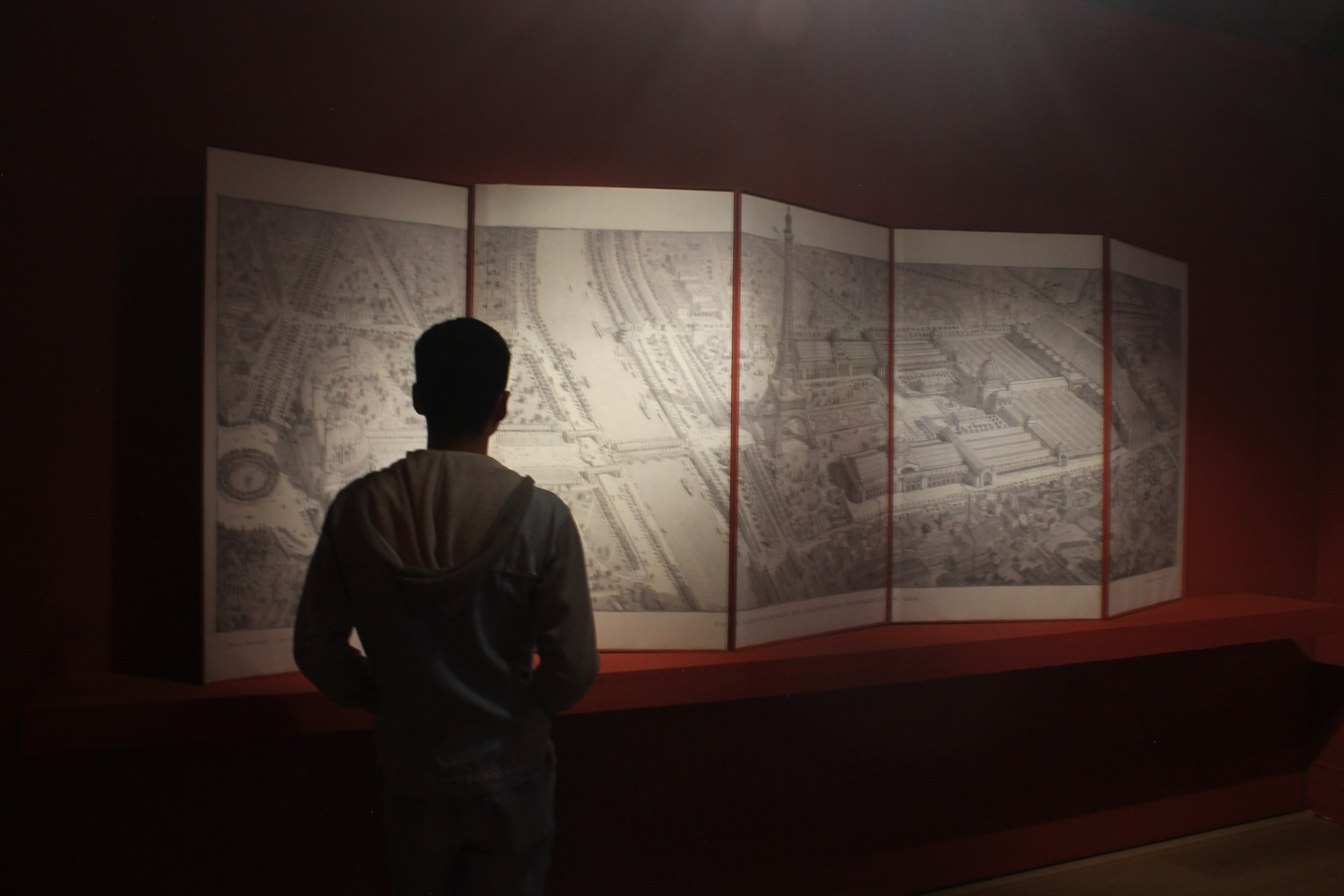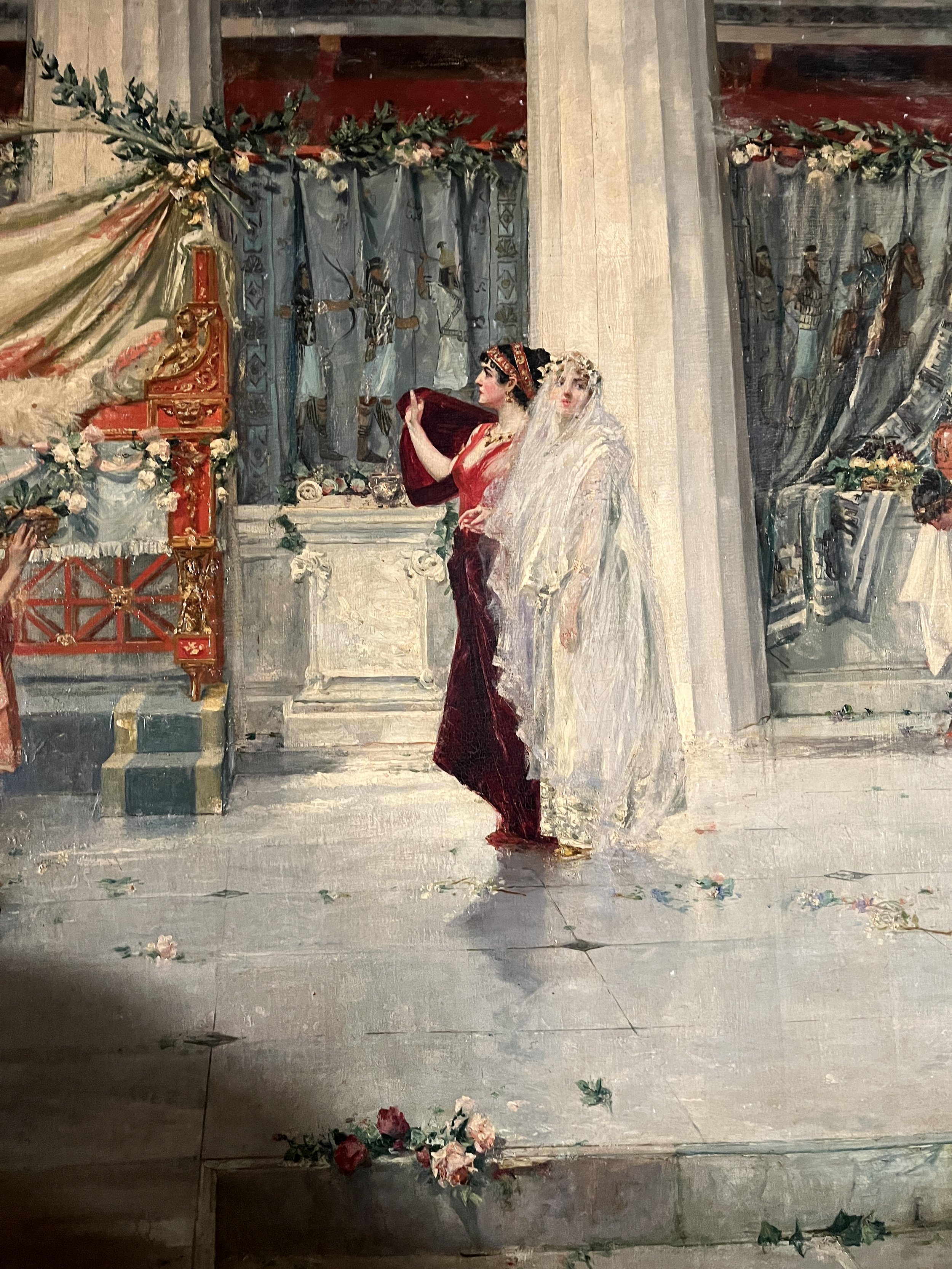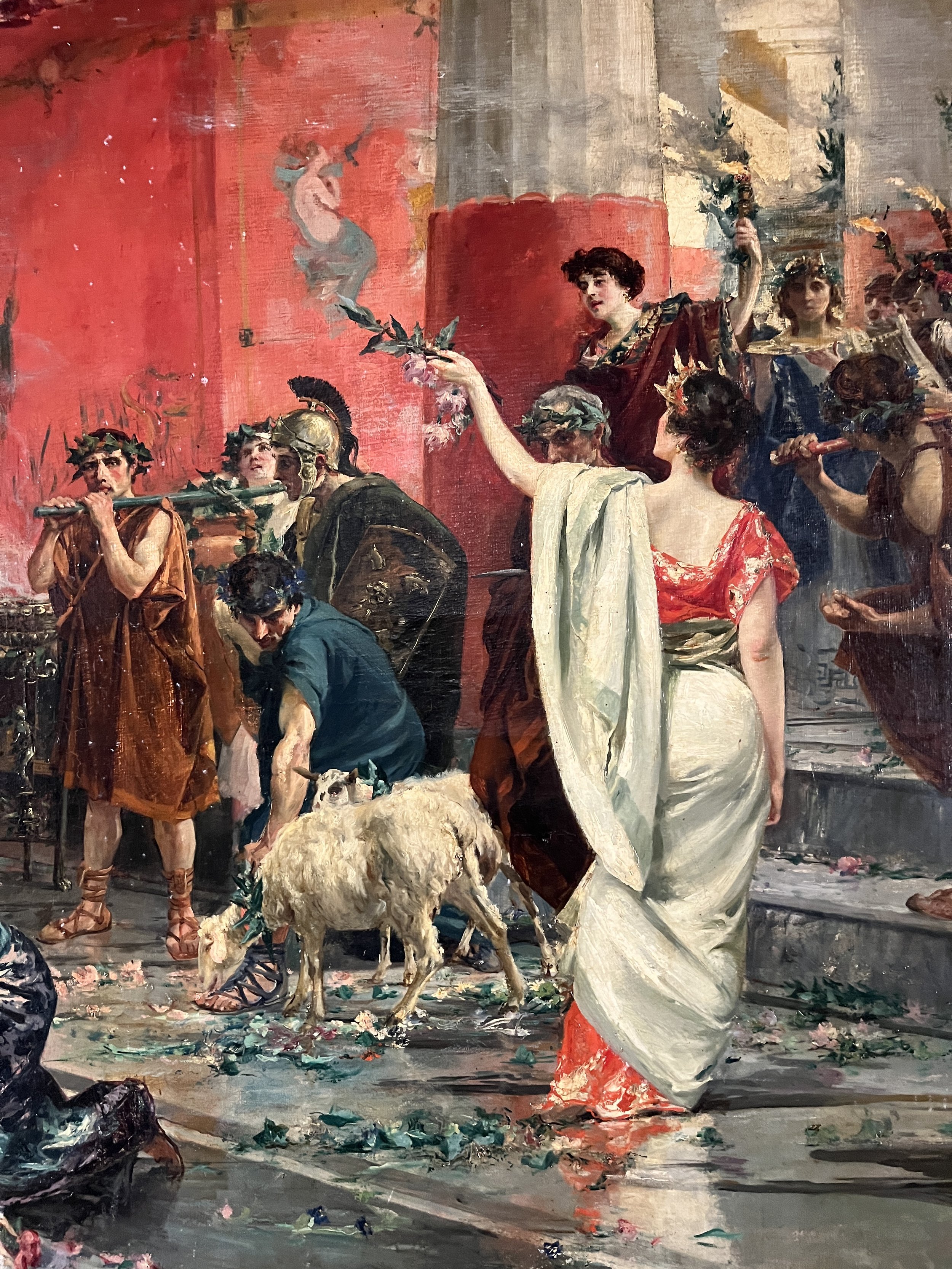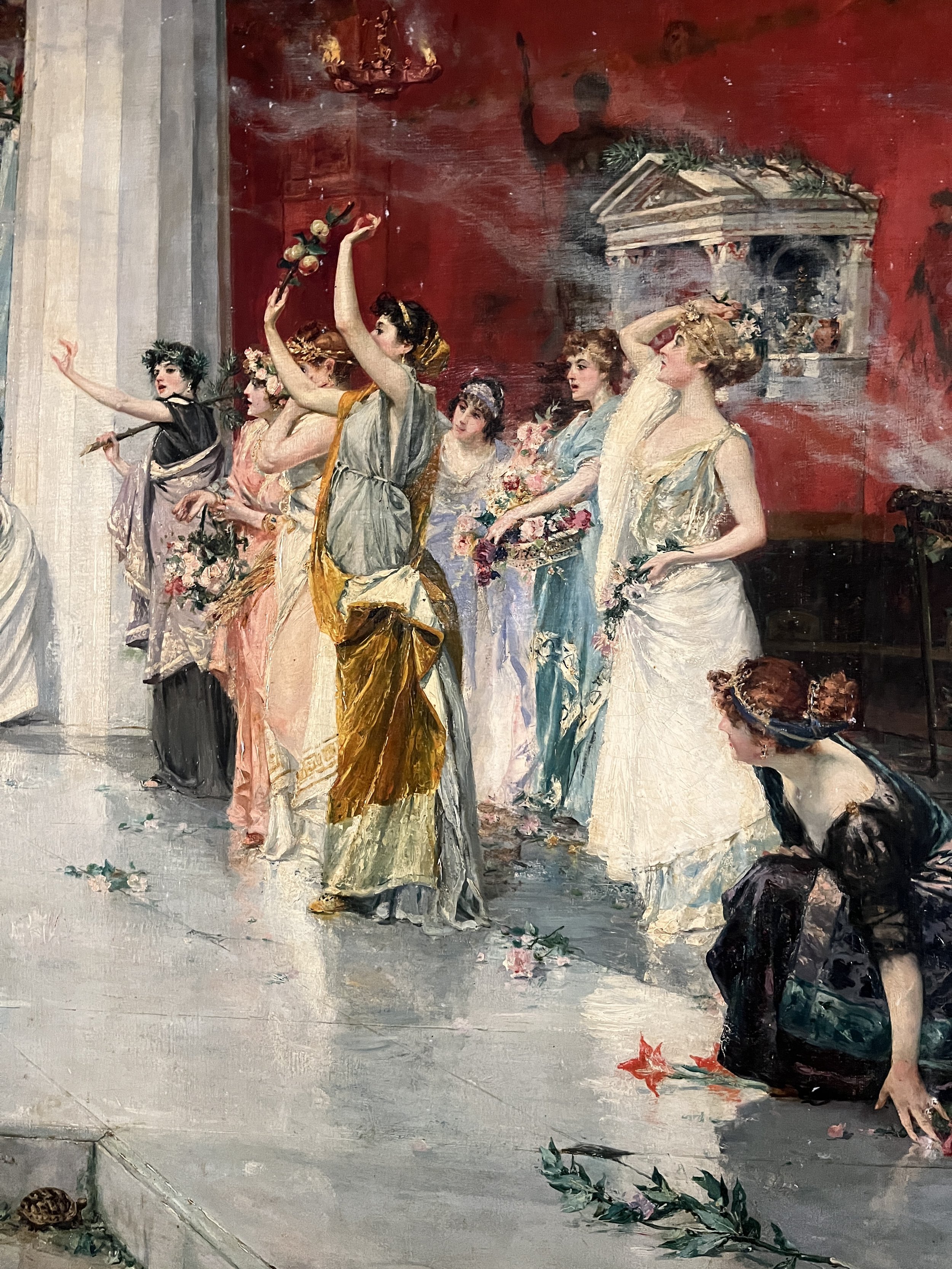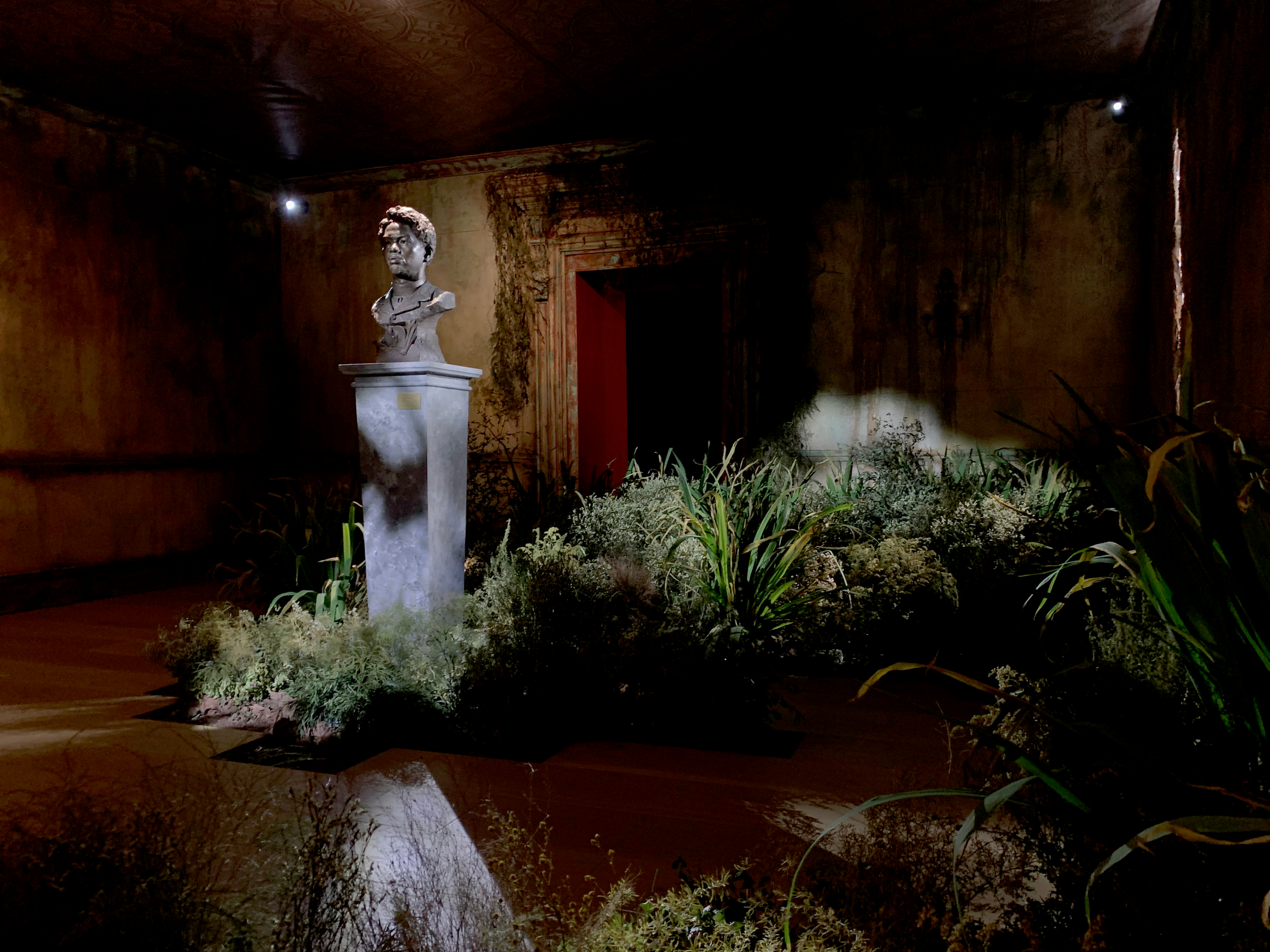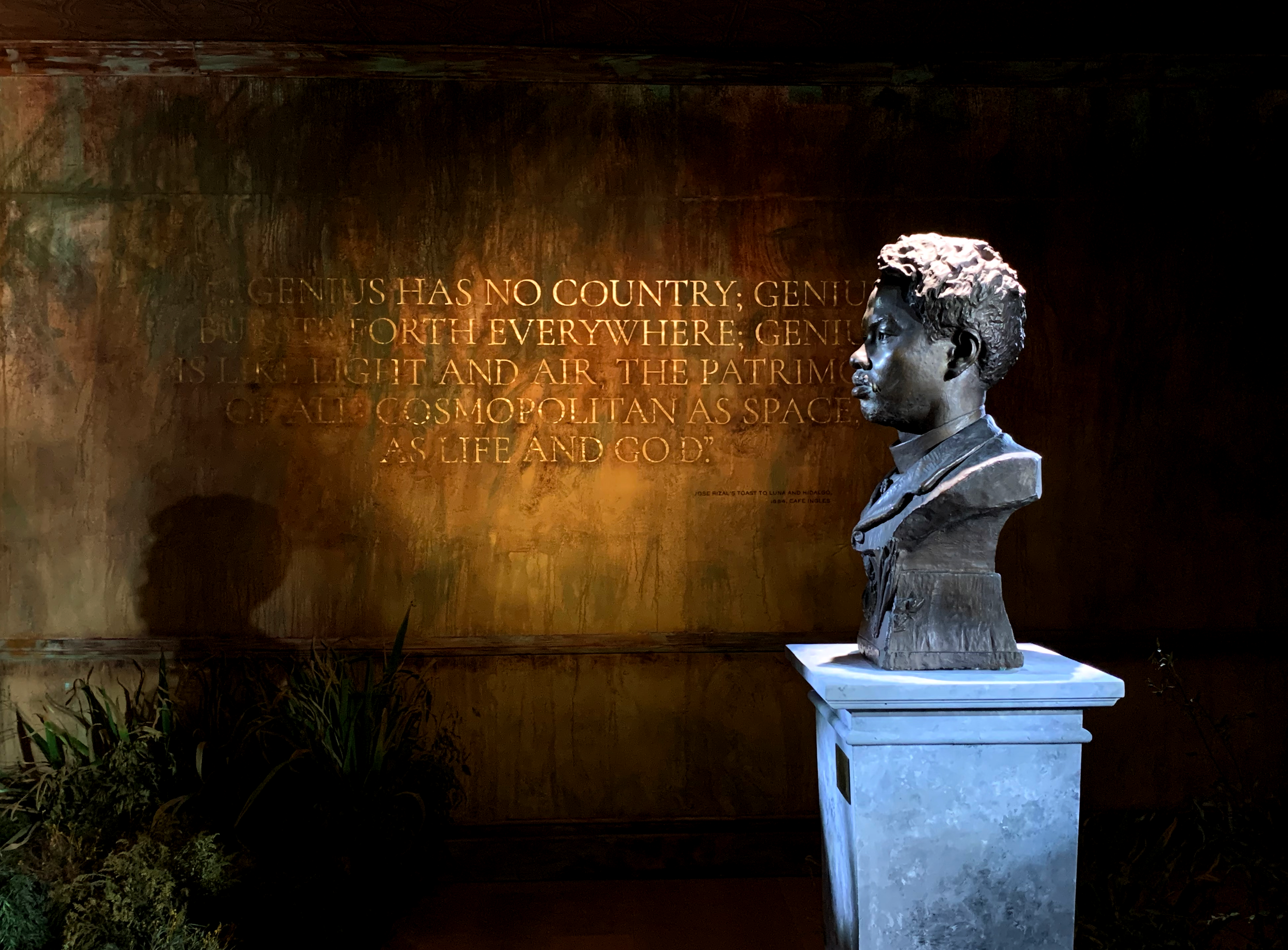A New Age of Splendor
Juan Luna’s “Hymen, oh, Hymènèe” Gloriously Rediscovered
Written by Marcus Barasi
Photos by Natasha Daclitan, Ira Nicolas Maralit, and Alyssandra Juliana Regala
July 7, 2023
“Hymen, oh, Hymènèe!” by Juan Luna in Ayala Museum
“Alab ng puso, sa dibdib mo’y buhay” is an epitaph declared by the Filipino individual every time they sing their national anthem. Fittingly, one of the Philippines’ national heroes, Juan Luna, has always been venerated for his ability to imbibe that line through his intellect and talent—which he primarily displayed for not just the Philippines but for the whole world to see through his paintings. Having been recently unearthed, his latest–discovered painting thrums with the same skill and passion as his most well–known one, The Spoliarium, and is aptly named Hymen, oh, Hymènèe! or Boda Romana (Roman Wedding).
Nestled in the primary display hall of the recently–renovated and thus much more sleek–looking Ayala Museum, Hymen, oh, Hymènèe! can be found by visiting the gallery’s Splendor exhibit—which, as a whole, aims to venerate Juan Luna for his legacy as an artist and a hero. Opening right on time for the 125th anniversary of Philippine independence and nationhood, the exhibition had been planned since October 2022 and is reportedly to thank for the current uptick in gallery visitors since the first day of its reveal.
Upon entering the immersive exhibit, the viewer is immediately greeted by set designs that are just as masterfully painted and styled to simulate a journey through the time that Luna took to produce the painting. As such, one of the first stops will inform you about the 1889 Paris Exposition, a world’s fair that various countries participate and exhibit their products and works. It was actually during that particular exposition that Luna’s Hymen, oh, Hymènèe! was first revealed to the public, coincidentally just a couple of months after the inauguration of the Eiffel Tower. However, as is presented in the closer historical examination that the exhibit provides, Luna actually completed his painting in 1887—thus predating even the completion of Paris’ iconic landmark.
Venturing further into the painting’s and Luna’s background, the literal writings on the exhibit’s walls explain that Hymen, oh, Hymènèe! was not Luna’s first choice for exhibition at the 1889 Paris Exposition because the painting was meant to be for his private collection only. However, since the Spoliarium was in the custody of the Spanish, his hopes of displaying that work instead were promptly dashed. Prior to this, Spoliarium already received a gold medal at the 1884 Exposicion Nacional de Bellas Artes, a competition that Luna was only able to join through the recommendation of his teacher, Alejo Vera, at the Academia de Dibujo y Pintura— which he enrolled in after dropping out of the Escuela Nautica de Manila.
Two years after his 1884 recognition, Luna then married the woman recognized to be the love of his life, Maria de la Paz Pardo de Tavera y Gorricho. It was actually on their honeymoon in Venice that Luna began working on Hymen, oh, Hymènèe!, along with two other works, Venezia and Sorprendidos. Definitely feeling inspired by the fresh love in the air, Luna painted a picturesque wedding scene in Hymen, oh, Hymènèe!—undoubtedly meaning to highlight marriage as a significant rite of passage, most especially in his case, having been initially disproved by Paz’s parents.
Furthermore, upon getting a closer look at the painting, Luna’s fascination with Pompeii becomes apparent in its scenery and characters, with his distinct initial sketches detailing the inspirations he took from the ancient Italian city. Moreover, while the painting spotlights the bride, the work as a whole features a relatively more candid scenery, than the Spoliarium, for example, that also equally underscores its background characters. Such attention to detail can be attributed to Luna’s practice of undertaking character studies, as he was very particular with the outcomes of his paintings. In the end, Hymen, oh, Hymènèe!, fittingly named after the Greek goddess of marriage, came to life as an oil-based painting, whose condition was actually well-preserved throughout the turns of the centuries as it had apparently been kept in storage for a long time—thus not needing to be restored.
Thanks to this conservation, much of the painting’s finer details can be properly viewed and appreciated by any visitor to the exhibition. For instance, there sits a turtle subtly hidden away in the crevice of the scenery’s floor, apparently meant to symbolize Luna’s hopes for a submissive wife and a comfortable home. Additionally, the attention to detail afforded by the painting’s pristine condition also allows the beholder to ponder Luna’s role in the imagery’s setting, or the lack thereof. The groom’s absence from the depicted wedding is actually intentional, with Luna instead choosing to make his presence felt through the grandiose interiors of the ceremonial atrium. Ravishing reds, opulent ornaments, and mythological murals complete the atmosphere of sublimity, purposefully embodying Luna’s luxuriance and genius.
After basking in the painting’s glow, the visitor is then literally ushered into the new era of Philippine artistry. The exhibit’s final room, with a portrait bust of Luna, positioned right in its center, challenges visitors to reexamine their notion of “Pinoy Pride.” The design motif of a botanic overgrowth intentionally invokes the national spirit powerfully permeating through unfavorable odds. With countless contemporary artists, such as SB19, Dolly De Leon, or Catriona Gray, taking the Philippines to the modern world stage, Hymen, oh, Hymènèe! and Luna himself remind us of the earliest vestiges of Philippine artistry and Filipino greatness.
Ultimately, the Splendor exhibit ends with a rightful veneration of Juan Luna as a national figure that transcended barriers and overcame colonial limitations. Through masterful displays of visual artistry, Luna helped put the country on the world map not just as a colony of Spain but as its own, distinct nation. Historically, following Spain’s defeat during the Philippine Revolution, Filipino artists had been strategically erased from foreign consciousness. Nevertheless, the rediscovery of Hymen, oh, Hymènèe! and the reinvigorated veneration of Juan Luna herald a new age for the Philippines’ ever-growing historical canon, an age of splendor.


